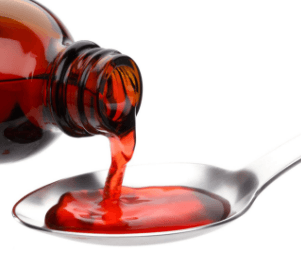Do you know that all pharmaceutical syrups are not manufactured equally? If you don’t, then don’t scratch your head. In fact, there is a subtle difference in these products that can cause ineffective use in clinical effects. Pharmaceutical syrup generally can be broken down into different categories i.e. suspensions, solutions, elixirs and emulsions.
Therefore, it is important for pharmacists to understand in-depth these differences properly to help them educate their clients. Below are some of the fundamental differences and their effect on the patient.
We all understand that a syrup is a solution and in a solution, a solute is utterly dissolved prior to medication administration. Simply, this is a drug particle of pharmaceutical solution that completely dissolves into the solvent. In dosage form, this is the most convenient solution for patients that need no shaking.
Here, the particles of the drug are equally distributed in equal volumes throughout the solution. That means the administered dosage is directly proportional to the solution volume. Therefore, this product is a convenient dosage chiefly for both children and adults prior to administration.
Here, the particles of the drug are equally distributed in equal volumes throughout the solution. That means the administered dosage is directly proportional to the solution volume. Therefore, this product is a convenient dosage chiefly for both children and adults prior to administration.
There are some pharmaceuticals syrups that are viscous due to a high concentration of sugar. The prime purpose of this high sugar concentration is to improve medicine palatability. This is most important to younger children to take as it is less bitter. On the hand, high sugar concentrations can help to reduce the growth of microorganisms within the syrup. They are most suitable for pediatric use.
However, looking from the other side, it is eye pointing. Due to a high concentration of sugar in the solution, pharmacists should be cautious and made aware not to employ such medicine to diabetic patients.
Suspension
Unlike pharmaceutical syrup, oral solution is relatively similar only that the drug particles do not dissolve into solvent completely. Instead, they get suspended in the medium of the liquid making it pretty difficult for drug particles to distribute throughout the solution. Particles, in this case, may be subjected to effects of some forces externally i.e. gravity. Finally, the solution will form two distinct layers where the top layer is less concentrated than the bottom one.
For young children, most of the suspension used is liquid antibiotics. That is why patient education, in this case, is crucial. Suspension formulation development pharmacists should teach their patients to shake well before use when administering these medicines to them. Otherwise, the dosage may not work effectively as expected and they will have an inappropriate impact on the users.
Related: Absorption, Distribution, Metabolism and Excretion of Drug
Related: Absorption, Distribution, Metabolism and Excretion of Drug
In conclusion, pharmaceutical syrup can be of different categories as earlier mentioned. There are categories that are encountered even update and of course, there are other categories that are not. Therefore as a pharmacist, it is important to teach, educate and make aware to your patients about these differences before administering them these medicines.
Pharmaceutical science is an umbrella that covers all sciences related to pharmaceuticals or pharmacotherapy. Therefore it needs a pharmacist to understand in details the nature and characteristics of pharmaceutical products for improvement of healthy living within the society.
Get subject wise printable pdf notesView Here



No comments:
Post a Comment
Please don't spam. Comments having links would not be published.